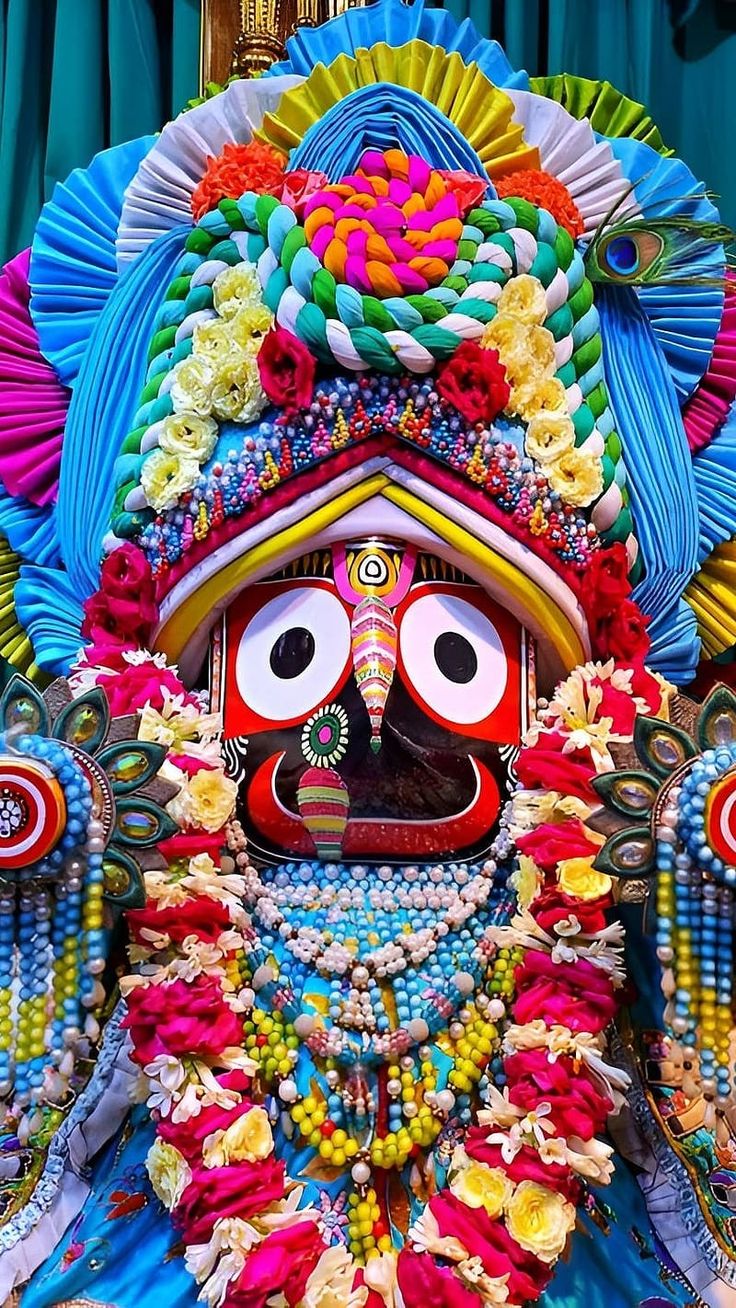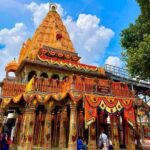Jagannath: The Divine Lord of Compassion and Unity
Introduction
Jagannath, a revered form of Lord Vishnu, holds a special place in the hearts of millions of devotees, particularly in Puri, Odisha, where his temple attracts pilgrims from all over the world. The name “Jagannath” translates to “Lord of the Universe,” which perfectly encapsulates the deity’s significance in the spiritual and cultural life of India. The Jagannath temple, with its rich history and spiritual power, stands as a beacon of divine love, compassion, and unity. In this article, we’ll delve into the biography, daily life impacts, history, and significance of Jagannath, as well as his importance in society.
1. The History: The Lord of the Universe
It’s origins date back over a thousand years and are deeply intertwined with the ancient traditions of Hinduism. According to legend, Lord Jagannath was originally worshipped as Lord Vishnu’s incarnation in the Dvapara Yuga, primarily at the Jagannath Temple in Puri. The story of Jagannath’s appearance begins with King Indradyumna, who was led by divine instructions to establish the deity of Lord Vishnu in Puri.
Over time, the figure of Lord Jagannath became associated not only with Vishnu but also with a more inclusive, compassionate form of divinity, inviting devotees of all castes and creeds. The presence of Jagannath in Puri symbolizes a powerful connection between the divine and humanity. Lord Jagannath’s image, made from wood, is believed to be divinely crafted and is periodically replaced in a sacred ceremony known as the Nabakalebara.
2. The Symbolism
It represents an inclusive form of divinity that transcends barriers of caste, religion, and social status. His form is unique because he is depicted as a rudimentary, featureless image with large, round eyes. The simplicity and childlike features of his idol are believed to signify his accessibility to all devotees, no matter their background or status in society.
It is not alone; he is accompanied by his sibling deities, Balabhadra (his brother) and Subhadra (his sister). Together, they are worshipped as a divine trio in Puri. The chariot festival, known as Ratha Yatra, is celebrated to honor their divine presence and is one of the largest religious gatherings in the world.
3. Daily Life and Observances: A Divine Routine
In the daily life at the Jagannath Temple in Puri, rituals and prayers play an integral role. The temple opens early in the morning with a series of rituals and offerings to Lord Jagannath, including aarti and bhog (sacred food). Devotees gather to witness the rituals of the deity’s worship, offering flowers, fruit, and other sacred items.
One of the most fascinating aspects of Jagannath’s daily life is his food offerings. Unlike other deities who are offered just simple meals, Lord Jagannath is given a grand feast every day, comprising over 56 different food items, known as the Mahaprasad. This food is distributed to the devotees, making it not just a spiritual experience but also a communal one. The significance of Mahaprasad reflects Jagannath’s role as the nourisher of both body and soul.
4. The Significance of the Ratha Yatra (Chariot Festival)
The Ratha Yatra (Chariot Festival) is one of the most significant observances related to Lord Jagannath. Held annually, usually in the month of Ashadha (June–July), this grand procession involves the deities being taken out in massive chariots to the Gundicha Temple. The festival is an expression of divine love and devotion, as the deities are ritually taken on a journey, symbolizing their willingness to engage with the world.
Ratha Yatra attracts millions of devotees and tourists, with the sight of Lord Jagannath, Balabhadra, and Subhadra being paraded in their grand chariots filling the streets of Puri. The festival promotes a sense of unity, equality, and devotion as everyone, irrespective of their social standing, participates in pulling the chariots.
5. The Cultural and Social Impact
It has not only shaped the spiritual lives of countless devotees but has also influenced the culture, art, and music of the region. The Jagannath cult has inspired a distinctive form of Odissi dance, music, and art, which are dedicated to him. This has provided a deep cultural legacy, making Puri a central hub for the promotion of traditional art forms.
Socially, It’s inclusive nature has had a significant impact in promoting equality. The Jagannath Temple is one of the few temples in India where people from all walks of life, including untouchables, have been allowed to enter. This aspect of Jagannath’s worship is rooted in his message of universal love and acceptance.
Additionally, the concept of Mahaprasad, or food offerings, serves as a reminder of Jagannath’s role as the provider of sustenance, not just for the soul but for the body as well. The distribution of Mahaprasad to all, without discrimination, promotes a spirit of community and sharing.
6. FAQs
- Why is idol unique?
The idol It is known for its distinctive, simple, and featureless appearance, which is said to symbolize his all-encompassing and inclusive nature. The round eyes and plain face are a representation of his accessibility and divine simplicity. - What is the significance of the Ratha Yatra?
The Ratha Yatra is a grand festival that celebrates Lord Jagannath’s journey to his aunt’s house in the Gundicha Temple. It symbolizes his engagement with the world and his willingness to spread love and compassion to all beings. - What is Mahaprasad?
Mahaprasad is the sacred food offered to Lord Jagannath, consisting of a variety of dishes. It is considered highly holy, and millions of devotees partake in it after it has been offered to the deity, symbolizing the sharing of divine blessings. - Can non-Hindus participate in Jagannath’s worship?
Yes, It is a symbol of inclusivity, and anyone, regardless of religion, is welcome to participate in the rituals, festivals, and observances related to him. His temple in Puri is known for its universal message of love and acceptance.
7. Role in Modern Society
In modern society, the teachings and legacy of It continue to resonate deeply. His emphasis on unity, compassion, and equality is a message that transcends time and has influenced social reforms, especially in Odisha. The Jagannath Temple and the rituals associated with it continue to inspire devotion, fostering a sense of community and spiritual awakening.
It’s influence goes beyond religion, reaching into the realms of art, culture, and social consciousness, where his ideals of inclusivity and divine love promote harmony and peace.
Conclusion
It’s, the Lord of the Universe, is more than just a deity; he is a symbol of unity, compassion, and spiritual liberation. His impact on daily life, the profound significance of his festivals, and his transformative influence on society make him one of the most cherished figures in Hinduism. Whether through the grand celebrations of Ratha Yatra, the divine offerings of Mahaprasad, or his message of inclusive spirituality, Lord Jagannath continues to inspire millions. His temple in Puri stands as a beacon of hope, love, and community, reminding us all of the divine presence that unites us all.










